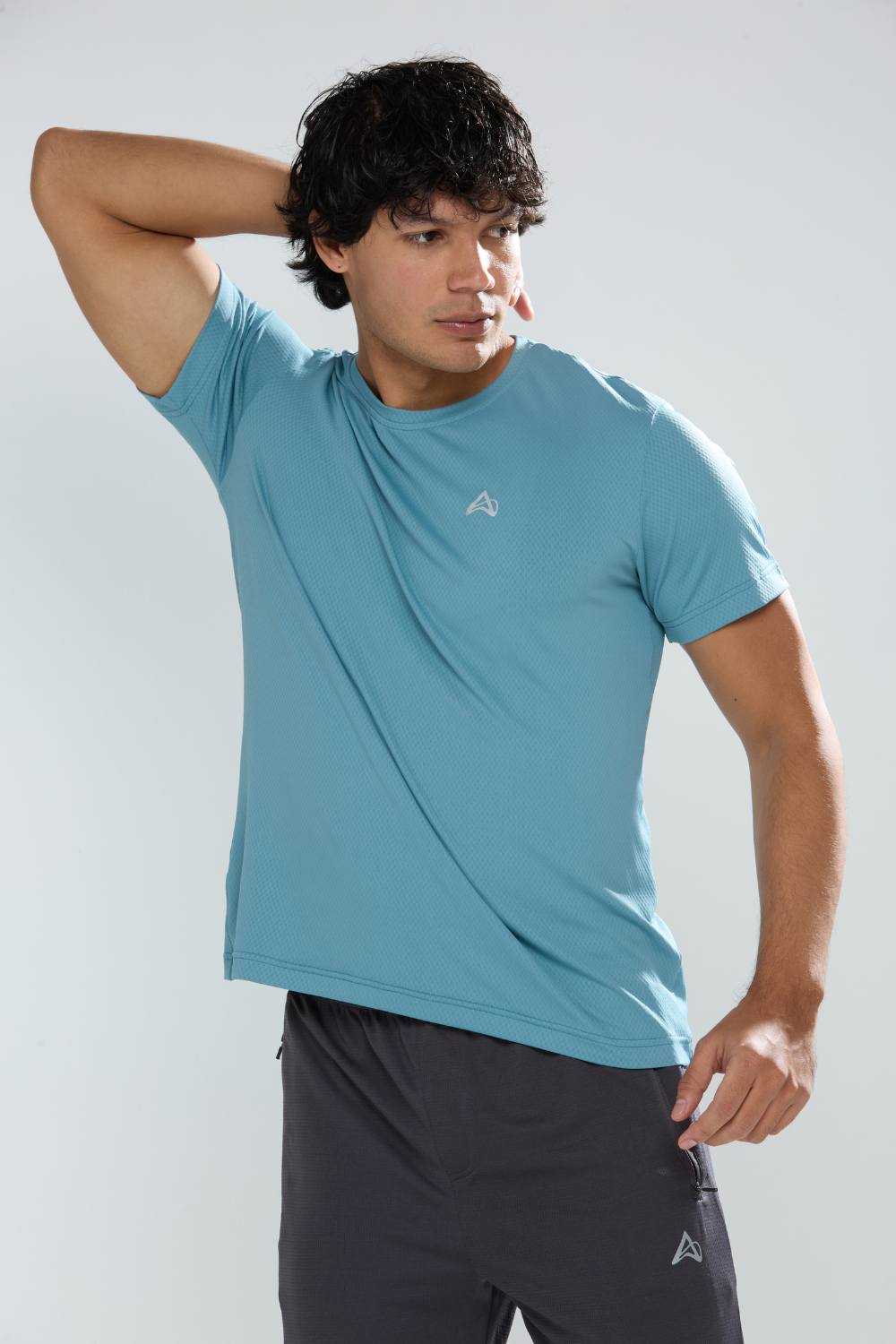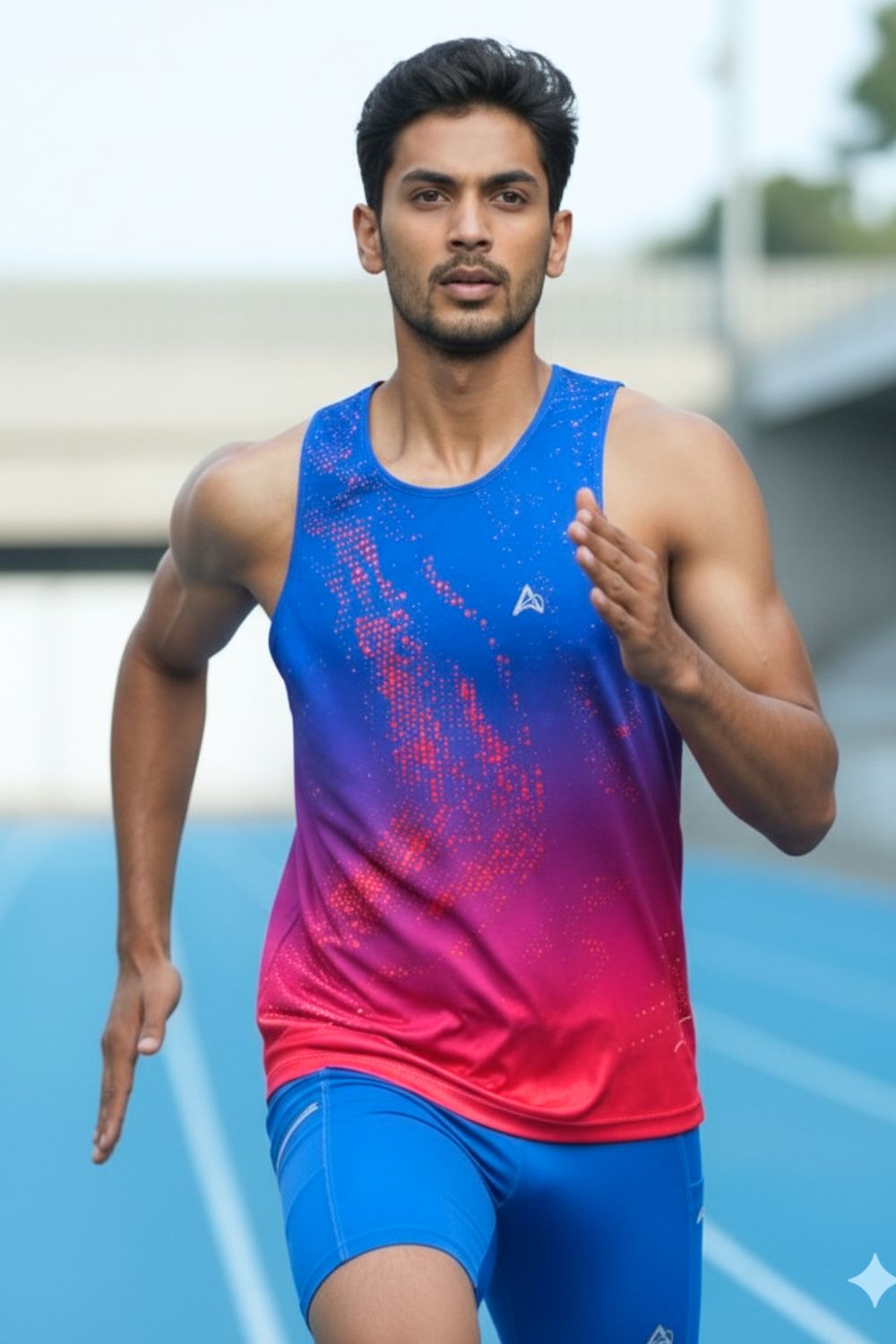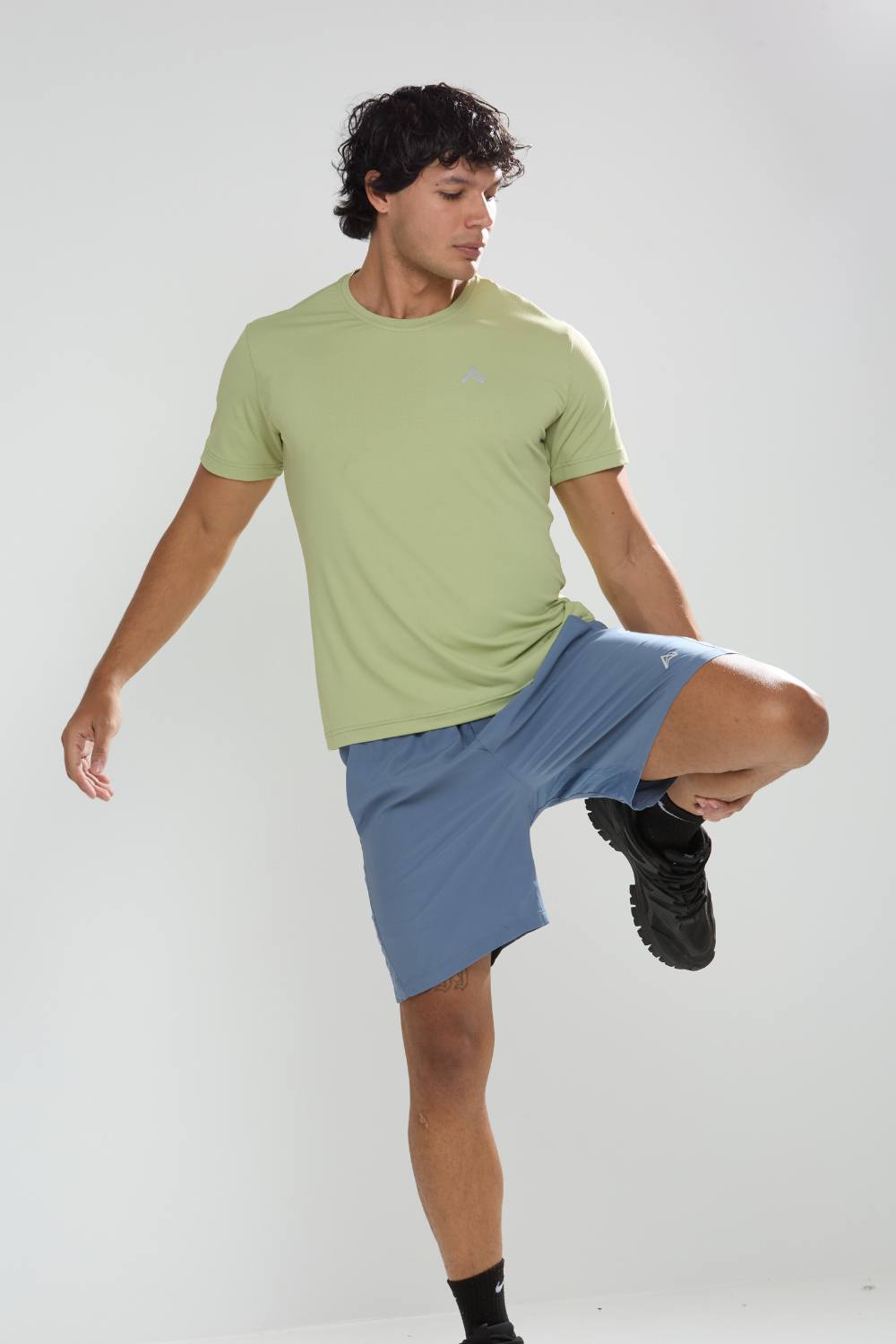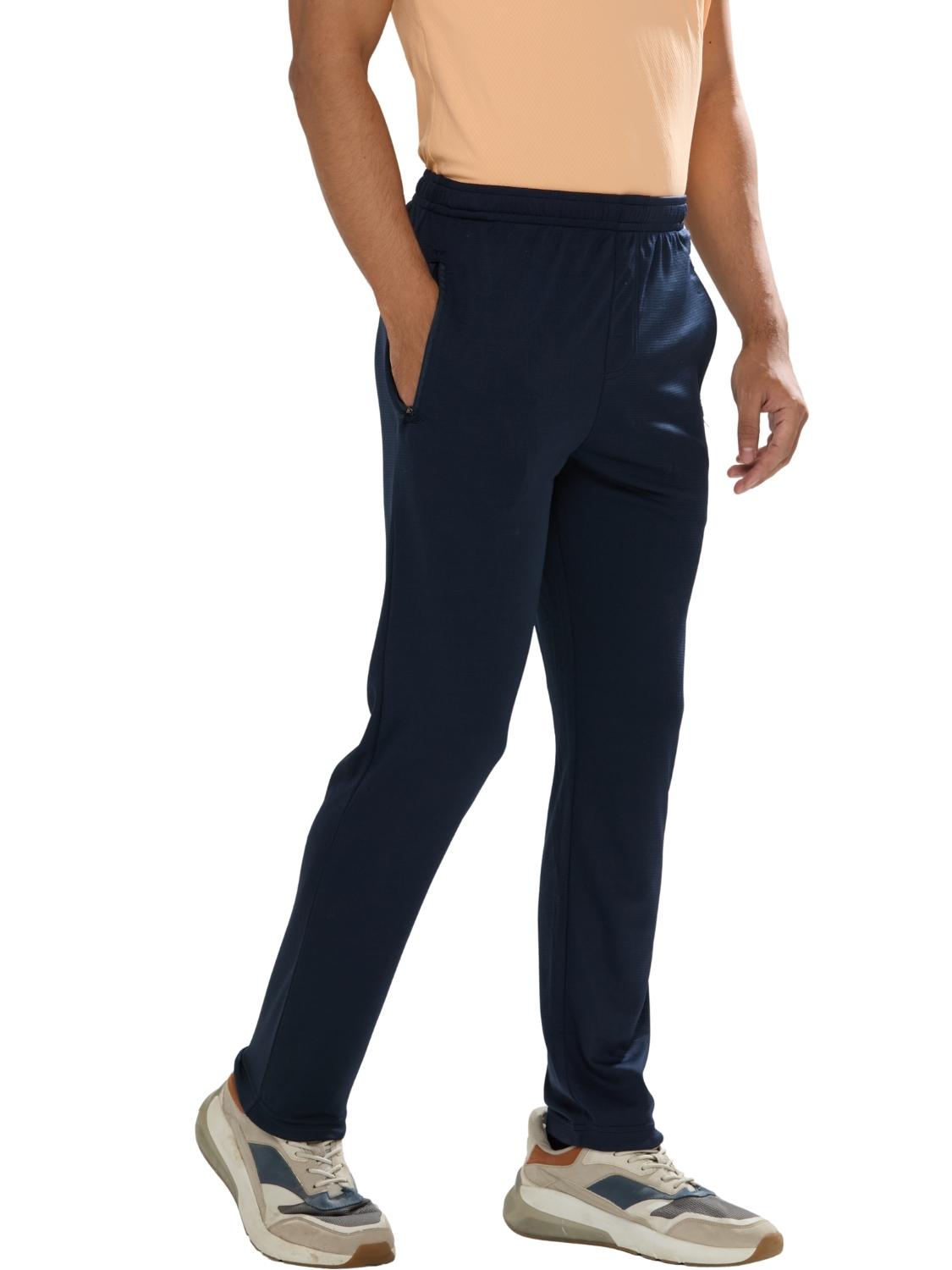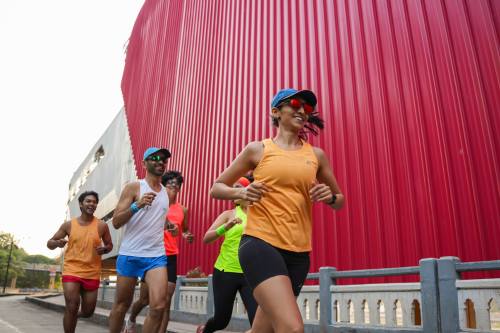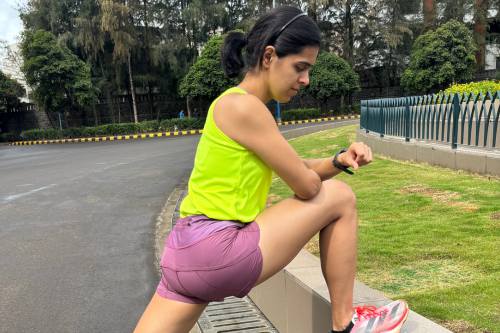Imagine tying your running shoes as dusk falls over the chaotic streets of Mumbai, where rickshaws honk relentlessly and crowds overflow onto the pavements. The fading light turns every step into a gamble, making visibility not just an advantage, but a critical safeguard. In thriving urban centers like Bangalore, Hyderabad, Pune, and Delhi, runners navigate this daily hustle, where staying visible amid the traffic frenzy can mean the difference between a refreshing workout and a perilous encounter.
Tired of gear that slows you down? Chafing, soggy fabrics, and missing pockets kill your run's momentum. At Aguante, we're runners who get it. Our high-performance activewear features moisture-wicking fabrics, ergonomic designs, and smart storage to keep you focused. Shop Now!
Reflective Elements Enhance Safety for Runners on Busy Roads: Why Visibility Matters
In the realm of high-performance athletic wear, companies are rising to meet this urgent need head-on. Consider aguante.in, a brand dedicated to crafting clothing optimized for India's unique challenges scorching temperatures, oppressive humidity, and erratic city terrains. Their emphasis lies in embedding reflective features that provide real safety enhancements, all while preserving ease of movement and aesthetic appeal.
Statistics underscore the gravity of the situation. The rate of fatalities at night on roads is triple that of daytime, with 76 percent of pedestrian deaths occurring in darkness.76 percent of pedestrian fatalities For dedicated runners who favor early morning or evening sessions, these figures are particularly alarming. In India, the toll is even more pronounced: road accidents in 2024 resulted in approximately 180,000 deaths, marking a continued upward trend from previous years.approximately 180,000 deaths This escalation highlights why reflective technologies are evolving from mere accessories to indispensable components of running attire.
Emerging Trends or Recent Developments
The reflective materials sector is experiencing robust expansion, propelled by worldwide efforts to elevate safety protocols. The global market reached USD 7.0 Billion in 2024 and is forecasted to grow to USD 10.0 Billion by 2033, achieving a compound annual growth rate of 4.06 percent from 2025 to 2033. The Asia-Pacific region commands over 40 percent of the market share, bolstered by swift urban growth and rigorous policies in nations like India. For the athletic community, this signifies rapid advancements in apparel design.
Manufacturers are incorporating cutting-edge solutions such as microprismatic and glass beads technologies, which efficiently redirect light back to its origin.microprismatic and glass beads These integrations are subtle and streamlined, preserving essential qualities like air circulation and elasticity vital for endurance runs in humid locales such as Gurugram or Surat. Aguante.in excels in this area by prioritizing athlete-centric features: stable pockets that resist jostling, chafe-preventing interiors, and sweat-evaporating textiles, complemented by reflective highlights validated through real-world testing.
Behind this surge are regulatory pressures and market demands. Authorities globally are imposing tougher visibility requirements across sectors like building, vehicles, and individual protection. In athletics, this manifests as outerwear with luminous bands that activate under vehicle beams or legwear with discreet accents that avert near-misses on shadowed paths in Ahmedabad. Recent breakthroughs, including 3M's enhanced reflective fabrics introduced in 2023 that boost flexibility by 25 percent and cut weight by 15 percent, illustrate the sector's momentum.boost flexibility by 25 percent Moreover, emerging smart fabrics that intensify reflection in dim conditions signal a luminous path ahead.
Social media channels including Instagram, Facebook, and YouTube are amplifying these shifts. Accounts like @barefoot_coach_shanth_koushik and @runholic_dev spotlight equipment that merges functionality with safety, motivating audiences in key areas such as Navi Mumbai or Pune to integrate visibility into their fitness habits. As urbanization accelerates, these platforms foster communities that value gear adapted to local demands, further propelling innovation.
Looking deeper, the retro-reflective materials market, valued at USD 13.48 billion in 2024, is projected to expand to USD 52.08 billion by 2032 at an 18.4 percent CAGR.18.4 percent CAGR This growth is fueled by infrastructure booms and tech progress, with applications extending to sportswear through intelligent integrations in textiles and outdoor apparel. In 2025, trends point to stretchable reflective fabrics enhanced by laser engraving and 3D knitting for superior light spread and user comfort.laser engraving and 3D knitting
Real-World Examples, Applications, or Case Studies
Consider the vibrant arteries of India's major cities, where twilight jogs involve weaving through dense commuter flows. In hubs like Delhi or Bangalore, athletes express greater assurance when donning outfits that draw driver's attention from a distance. Research supports this: Enhancing retroreflectivity on signs such as STOP indicators has yielded substantial accident declines. For example, in South Carolina and Connecticut, upgrades reduced rear-end collisions by 17.5 percent overall, with sharper decreases up to 24.9 percent at less-trafficked junctions.reduced rear-end collisions by 17.5 percent
Extending this to wearable items amplifies the advantages. City-based running groups in Hyderabad or Mumbai are adopting luminous vests and footwear, mitigating dangers in collective outings. Expert analyses reinforce the point: Strategic illumination at crossroads can diminish nighttime pedestrian incidents by 42 percent, and devices like rectangular rapid flashing beacons achieve a 47 percent drop.42 percent For aguante.in, this translates to offerings engineered for Indian physiques and roadways locally developed solutions that rival international benchmarks at equitable costs.
Leading players are at the forefront. The retro-reflective arena spans from roadway management to personal protection, with films, tapes, and cloths gaining prominence in athletic fabrics. Athletes broadcasting their journeys on YouTube underscore how these components convert risks into assured paces, particularly along bustling routes like Gurugram's highways. Federal programs in the U.S., emphasizing visibility near schools, parks, and transit points, aim to foster secure community links.emphasizing visibility near schools Adapting this to India reveals that reflective attire is imperative for dusk sessions in Surat or Ahmedabad, where evening traffic intensifies.
State-level initiatives offer further insights. For instance, Minnesota's approach to prioritizing lighting at risky rural spots has curbed nighttime mishaps, while Florida's shift to LED systems has illuminated hazardous intersections. In India, with road traffic crashes accounting for 43.7 percent of unintentional injury deaths, similar strategies could transform urban running safety.43.7 percent of unintentional injury deaths
Key Challenges, Limitations, or Risks
Naturally, hurdles persist. Striking a harmony between elite functionality and protective attributes remains challenging. Reflective substances occasionally introduce bulk or rigidity, conflicting with the demand for airy, pliable materials in India's muggy environments. Participants in Pune may fret over irritation or hampered mobility if embeddings fall short.
Ease of wear is a persistent concern. During intense perspiration episodes, such as a downpour dash in Mumbai, subpar reflectives might retain dampness, causing unease. Cost factors also loom: Sophisticated options like microprismatic sheets escalate expenses, possibly deterring cost-sensitive sportspeople in developing regions.microprismatic sheets
Nevertheless, entities like aguante.in confront these issues directly, tailoring their lineup to regional specifics to sidestep drawbacks. Through athlete-involved evaluations, they provide frictionless, stable necessities sans exorbitant fees. Innovations addressing durability and washability, as seen in recent stretch fabrics, are easing these constraints.
Opportunities, Efficiencies, or Business Impacts
Shifting perspectives, the prospects gleam brightly. Prioritizing reflective safeguards can penetrate fresh demographics, notably in India's metropolitan landscapes where after-dark exercise thrives. Metropolises like Bangalore and Delhi, brimming with health aficionados, offer vast scope for visibility-focused labels.
Such emphasis cultivates devotion. Secure-feeling runners remain loyal, disseminating tales via Facebook circles or Instagram videos. For aguante.in, this serves as a unique edge: Performance-oriented equipment attuned to Indian settings, encompassing reflective nuances and fair valuations, distinguishes them amid rivals.
Commercially, the implications are profound. With the retro-reflective domain advancing spurred by vehicles, building, and fabrics the fitness industry is poised for benefits. Eco-conscious developments mitigate ecological worries, paving routes to green collections that resonate with aware viewers on YouTube.eco-conscious developments
Productivities arise from astute configurations: Reflective aspects that serve dual purposes as fashion highlights, diminishing accessory requirements. In labor sites or congested zones, this equates to reduced incidents, societal savings, and fortified stances for safety-oriented firms. As global construction outlays approach USD 14 trillion by 2030, the demand for such materials in textiles will intensify.USD 14 trillion by 2030
Shining a Light on Safer Runs
As twilight envelops India's dynamic urbanscapes once more, the significance of reflective components in athletic wear crystallizes. Authorities in security and style concur: Visibility forms the bedrock of assured, harm-free pursuits. Forward-looking, advanced systems like responsive reflectives attuned to illumination herald substantial progress.
For enterprises, the directive is straightforward: Allocate resources to research, underscore protection in promotions, and serve city-based enthusiasts in locales like Navi Mumbai or Pune. Aguante.in embodies this ethos, fusing domestic ingenuity with worldwide norms to ensure runners remain conspicuous and protected. In an era of escalating road congestion, illumination-providing attire is not merely astute it's vital. Thus, on your next outing, ensure you're not solely advancing; you're radiating.
Frequently Asked Questions
Why are reflective elements important for runners on busy roads in India?
Reflective elements are crucial for runner safety, especially in Indian cities like Mumbai, Delhi, and Bangalore where traffic is heavy and visibility is poor during dawn and dusk runs. Statistics show that 76% of pedestrian fatalities occur in darkness, making reflective gear a critical safety feature rather than just an accessory. With India's road accident deaths reaching approximately 180,000 in 2024, reflective running apparel can significantly reduce the risk of accidents by making runners visible to drivers from a distance.
What are the latest innovations in reflective materials for athletic wear?
The reflective materials market has seen significant advancements, including microprismatic and glass beads technologies that efficiently redirect light back to its source. Recent breakthroughs like 3M's enhanced reflective fabrics introduced in 2023 have boosted flexibility by 25% and reduced weight by 15%. Emerging trends for 2025 include stretchable reflective fabrics enhanced by laser engraving and 3D knitting, along with smart fabrics that intensify reflection in dim conditions while maintaining breathability and comfort for Indian climate conditions.
How effective are reflective elements in reducing nighttime accidents for pedestrians and runners?
Research demonstrates that reflective elements can dramatically improve safety outcomes. Strategic illumination and reflective materials at crossroads can reduce nighttime pedestrian incidents by 42%, while enhanced retroreflectivity on traffic signs has reduced rear-end collisions by 17.5% overall, with decreases up to 24.9% at less-trafficked junctions. For runners wearing reflective gear, these statistics translate to significantly improved visibility and reduced accident risk during early morning or evening workout sessions in busy urban areas.
Disclaimer: The above helpful resources content contains personal opinions and experiences. The information provided is for general knowledge and does not constitute professional advice.
You may also be interested in: Why Indian Marathoners Prefer Lightweight Running Gear
Tired of gear that slows you down? Chafing, soggy fabrics, and missing pockets kill your run's momentum. At Aguante, we're runners who get it. Our high-performance activewear features moisture-wicking fabrics, ergonomic designs, and smart storage to keep you focused. Shop Now!
Powered by flareAI.co





